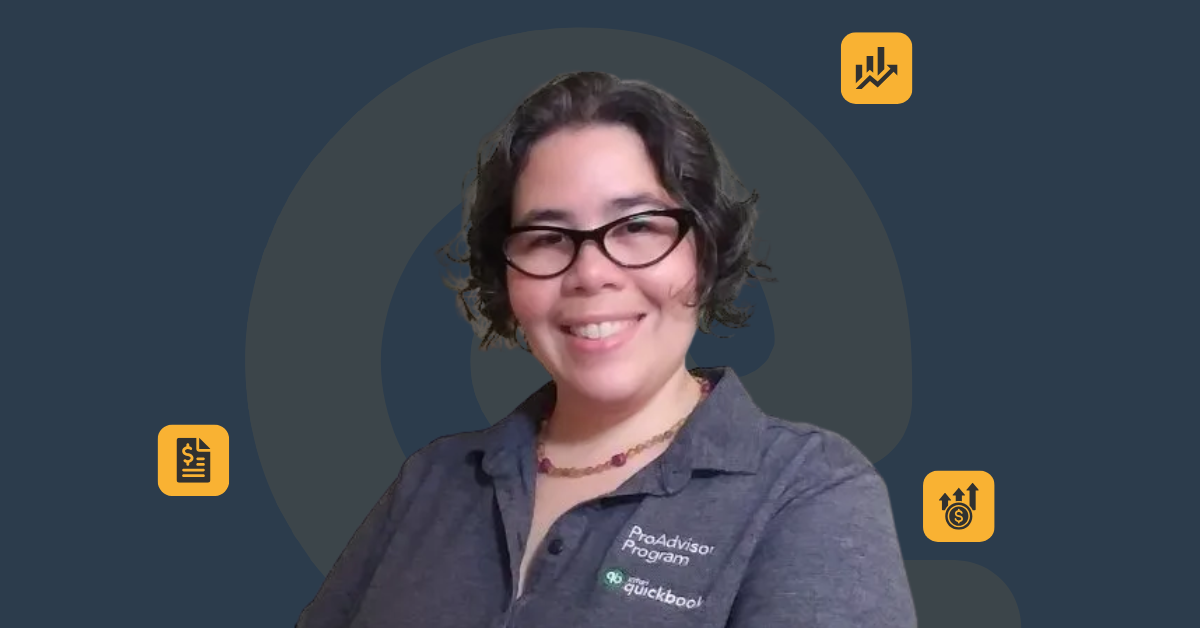Latest articles

“We thought we could just build it in Excel...” It’s a phrase we hear often from firms trying to implement value pricing on their own. On paper, it seems smart: build a custom spreadsheet, plug in your formulas, and start quoting. But it rarely works out that way. Spreadsheets are great for tracking data, but they’re not designed for live pricing conversations. In fact, they can make value pricing harder, more stressful, and less effective than it needs to be. Here’s why DIY spreadsheets are holding your pricing back—and how switching to purpose-built software changes everything. Why Spreadsheets Fall Short for Value Pricing Value pricing is dynamic. It relies on real-time scope evaluation, client interaction, and pricing psychology. Spreadsheets weren’t built for that. Common spreadsheet limitations: Not interactive : Clients can’t engage with the process Error-prone : One wrong formula can derail everything Visually flat : Hard to make compelling during a live meeting Not scalable : Becomes messy as you add services or options Teresa Slack learned this the hard way. Early on, she and her sister tried to build their own value pricing model in Excel. It was cumbersome, inflexible, and ultimately couldn’t support the complexity they needed. “We thought we could just build it in Excel... We quickly realised how challenging that was.” — Teresa Slack The Hidden Risks of DIY Pricing Models Trying to manage value pricing through spreadsheets doesn’t just waste time—it can actively damage your business. Inconsistent Pricing Without built-in logic, every quote is different depending on who created it, what version they used, or how confident they felt. Sales Friction Spreadsheet quotes look clunky. They don’t flow in a live meeting. Clients feel like they’re watching you do maths, not discuss value. Confused Clients When clients don’t clearly see what’s included or how the price was calculated, miscommunication is inevitable. No Room to Scale As your team grows, spreadsheets become harder to manage and update. Version control issues creep in, and onboarding new staff becomes a nightmare. What Modern Pricing Software Should Do A well-designed pricing tool does more than just calculate a number. It enables a better sales experience and value conversation . Here’s what to look for: Scope-based logic that adapts to each client’s needs Live, visual interface that supports interactive meetings Pre-built templates for bookkeeping, payroll, tax, and more Behavioural pricing features , like rewards for referrals or efficiencies Built-in tiering (e.g., Entry, Full, Premium) Instant proposals or follow-up integrations This isn’t about tech for tech’s sake. It’s about delivering pricing with clarity, consistency, and confidence. How Tools Like Effective Pricing Transform the Experience When Teresa adopted Effective Pricing , she saw an immediate change: Clients understood the scope of work Pricing meetings felt professional and guided Clients selected their own services Fees increased substantially “You cannot do value pricing easily without this amazing tool.” — Teresa Slack One of her clients even increased their monthly fee by 204% during the initial meeting—not because of a sales trick, but because the process made it easy to see the value on offer. Tools Create Consistency, Not Just Efficiency Having the right software doesn’t just make pricing faster. It makes it repeatable . It ensures every client gets the same level of clarity and professionalism, whether you’re quoting them yourself or handing it off to a team member. You can standardise your offerings, track conversion rates, and iterate confidently without fear of breaking a formula. Most importantly, you create a pricing experience that feels like part of your brand. Conclusion: Stop Treating Pricing Like a Side Task Pricing is not admin. It’s not just a number you send after a call. It’s a core part of your sales strategy and client relationship . If you're still using spreadsheets to manage your pricing, it's time to upgrade. Not just for your efficiency—but for your credibility, your growth, and your peace of mind. Try Effective Pricing Want to see what pricing looks like when it’s done right? 🎯 Book a free demo of Effective Pricing and discover how to: Quote with confidence Align pricing with value Convert more clients—without the guesswork → Stop struggling with spreadsheets. Start pricing with purpose.

“When you give one price, it’s always the wrong price.” — Teresa Slack It’s a common scenario. A prospective client asks for a quote. You review their details, estimate the work involved, and deliver a single price. Their reaction? They hesitate. They ask for a discount. Or worse—they ghost you completely. The issue isn’t that your price was too high or too low. The real problem? You gave them only one option. Why One Price Doesn’t Work A single price turns your service into a yes-or-no decision. You’re putting pressure on the client to either accept or reject your offer—without the context of value or flexibility. Even if you believe your price is fair, your client may not be ready to commit without understanding what they're really paying for. Plus, you’re locking yourself into a number that may not reflect the complexity, needs, or expectations of the client. The outcome? You either: Undercharge (and resent it later), or Overcharge (and lose the deal) Neither serves you or the client. What Clients Really Want: Control and Clarity In today’s world, clients expect transparency. They want to know: What they're getting Why it costs what it does What options are available They want to feel in control of the buying process. When Teresa Slack shifted to letting clients "build their own package" through Effective Pricing, everything changed. Clients began engaging with the process, asking better questions, and ultimately choosing higher-value packages themselves. The Power of Presenting Options Instead of giving a single number, offer clients a structured choice: Entry Level Full Service Premium Experience Or even better, let them dynamically adjust their selection based on scope. When clients see the value behind each service line, they make better-informed decisions. You move from price being a sticking point to it being a reflection of value. Teresa shared how one client increased their monthly fee by 204% after going through this process. Why? Because he realised everything that was on offer—and valued it. How to Present Pricing the Right Way Here’s how you shift from pricing resistance to pricing confidence: Scope Before You Quote Start with a discovery session or diagnostic review. Uncover: Volume and complexity of work Pain points and priorities Desired outcomes Use Interactive Pricing Tools Forget spreadsheets and static quotes. Use tools like Effective Pricing to: Show real-time price changes based on scope Let clients see what’s included Build transparency into every quote Let Clients Shape Their Package Allow toggling options on or off. If the full package is too expensive, don’t discount—adjust the scope. “We don’t discount. We remove services.” — Teresa Slack From Negotiation to Collaboration This approach changes the nature of the sales conversation: Old way: "Can you do it for less?" New way: "What if we removed reporting or payroll support to reduce the price?" You’re no longer justifying your fee. You’re collaborating with the client to find the right fit. That builds trust. That wins work. Conclusion: Stop Pricing in Absolutes If you’re still offering one quote per client, you’re missing a huge opportunity to: Position your value clearly Increase your average fee Build better client relationships The right price is the one the client chooses—because it reflects what they truly care about. Try Effective Pricing Want to see how flexible, transparent pricing can transform your firm? 🎯 Book a free demo of Effective Pricing and discover how to: Price confidently Scope accurately Convert more clients → Try it now and give your clients a choice they’ll actually value

Think you’ve moved away from hourly billing and embraced value pricing? You might not have. For many bookkeeping and accounting firms, pricing remains the Achilles' heel. Despite good intentions, most who "switch" to value pricing actually end up using fixed pricing—and they don't even realise it. On the surface, it feels like progress. But under the hood, it's often just the same problem dressed differently. In this article, we’ll explore the most common misstep firms make when transitioning their pricing models, why it matters, and how to make a true shift to value pricing that increases revenue, improves client relationships, and restores profitability.

"There were times we couldn’t make payroll. We pulled money from our personal investments just to pay staff." That’s how bad things had become for Teresa Slack, co-founder of Financly Bookkeeping Solutions. On the surface, her business looked like a success. It had a growing client base, a team of skilled staff, and years of momentum behind it. But underneath, the numbers told a different story: they were barely breaking even, despite all the hard work. The culprit? Outdated, ineffective pricing. Meet Teresa and Financly Based in Ontario, Canada, Financly is a virtual bookkeeping firm specialising in e-commerce businesses, particularly those selling on Shopify and Amazon. With a team of 10 working remotely across Canada and Europe, Teresa and her sister Connie built a thriving niche-focused firm. But as the business grew, so too did the pressure. In the early days, they charged hourly rates as low as $18, later increasing to $35. Eventually, they transitioned to fixed pricing, offering packages at $200, $300, and $400 per month. But even that wasn’t enough. The business couldn’t sustain the team they had built. "We were paying our staff more than what the clients paid us," Teresa recalled. Overworked, Underpaid, and Out of Options Despite having more than 100 tax clients and 50 consulting clients, Teresa and Connie weren’t paying themselves. They were burning out, fast. "It was incredibly stressful because we knew we needed to do things differently, but we didn’t have any money." Then came a pivotal moment: a conference in Toronto where they first heard Mark Wickersham speak about value pricing. The Lightbulb Moment They joined the Value Pricing Academy and soon learned they had been confusing fixed pricing with value pricing. The difference? With fixed pricing, every client pays the same. With value pricing, every client pays according to the unique scope of their needs. They began trying to build their own pricing models in Excel, but it was clunky and time-consuming. That’s when they discovered Effective Pricing . "You cannot do value pricing easily without this amazing tool," Teresa said. Putting It to the Test Teresa used Effective Pricing for the first time with a new client. She was nervous. "My heart was pounding. My mouth was dry. I didn’t know how it would go." But the result was astonishing. The client loved the process. They appreciated the transparency, the ability to select what services they wanted, and how the pricing adjusted dynamically based on scope. The outcome? A 204% increase in pricing. Reinventing the Sales Process Since then, Teresa has redesigned her entire sales approach. She now begins with a paid diagnostic review to uncover scope and pain points. Only after that does she present pricing using Effective Pricing. This two-step method means clients see the value before seeing the price. And Teresa can tailor each pricing conversation with precision. "When you give one price, it’s always the wrong price. Clients either ask for a discount or say no. Now, if a client thinks the package is too much, we remove services. We don’t discount." The Transformation: Financly 2.0 Financly is now thriving. The business is profitable. Staff are paid well and enjoy benefits. Teresa and Connie now take a salary. The firm is approaching $1 million in annual turnover. And clients? They now pay what they’re truly worth. "We have clients paying $4,000 a month for bookkeeping," Teresa said. "Ten years ago, I couldn’t have imagined that." Hidden Wins The benefits didn’t stop at pricing. Miscommunication has plummeted. Clients now see exactly what is and isn’t included. Upsells are natural. Clients return months later to add more services they saw during onboarding. Client fit has improved. Teresa now works only with clients who respect and value her work. Teresa’s Advice to Bookkeepers and Accountants "If you’re struggling, working long hours, and undercharging, make the leap to value pricing. The shift will let you attract better clients, do better work, and actually enjoy your business again." Ready to Make the Shift? Explore how Effective Pricing can transform your practice, just like it did for Teresa Slack. → Learn more and sign up for Effective Pricing today.

When Jessica Fox launched Florida Virtual Bookkeeper , she had nearly two decades of experience under her belt. What she didn’t have, however, was a pricing strategy. Like many solo practitioners, she started out just trying to make ends meet — charging what others told her to, relying on hourly billing, and making decisions based more on fear than confidence. She admits, “I did not know how to price… I was just starting out and happy that somebody was giving some steady work my way.” That approach worked, barely , until she realised she was undercharging massively and sabotaging her own growth. From hourly billing to undercharging: the early pricing struggles In the early days, Jessica priced everything manually. Sometimes she would estimate the hours, multiply by an hourly rate, and call it done. Other times, she relied on a value pricing spreadsheet a colleague sold her. It felt more sophisticated but didn’t change the outcome. “I was just pulling a number out of thin air and hoping it would work out,” she explained. “The spreadsheet would say you should charge $2,000 per month and I’d be like, no, that feels high… so out of my mouth would come $1,200.” The constant second-guessing, discounting before a client even responded, and fear of rejection wore on her. “I made so many horrible pricing mistakes. I tried to compete on price. I was billing hourly… which is ridiculous because as I became more efficient, I was giving myself a pay cut.” She knew there had to be a better way. In 2019, she found it. How one online course unlocked pricing confidence Jessica had been following Mark Wickersham’s content for a couple of years — reading the newsletters, watching YouTube videos, attending webinars — but the pricing strategies felt a little abstract. “It sounded good,” she said, “but I didn’t feel like I was ready to take action.” By 2019, necessity pushed her to try. She bought Mark’s ‘How to Price Bookkeeping’ course, telling herself that if she was spending that much, it had to pay for itself quickly. “I wasn’t just listening and taking notes. I implemented.” Before she even completed the course, she had already recouped her investment. That’s when she discovered Effective Pricing . Why the spreadsheet had to go Jessica was an early adopter of the software, jumping in when it launched through the Value Pricing Academy. “It just seemed like it was the answer to all of the challenges that I was having,” she said. “I really was hating that spreadsheet… that was just cluttering some packages together and hoping for the best.” There was a learning curve. She spent a few months testing the models, tweaking questions, and building her own structure behind the scenes. But once she started using it with clients, she never looked back. “Ever since then I have not looked back and I will not price without it.” 232% profit growth in year one (and triple-digit growth ever since) When Jessica turned on Effective Pricing for real, the results were immediate. “The first year that I implemented Effective Pricing, I increased my profit 232%. That number will stay with me forever.” And the growth didn’t stop there. “Year over year, I've been having triple digit growth. The years after that, it's been slightly less, but it's still always 110% or more.” She used the built-in pricing success metric to compare what she would have charged pre-Effective Pricing versus what she charged using the tool. “It was telling me, ‘Congratulations, you charge 200% more than you otherwise would have’, or ‘450% more’, triple-digit amounts.” Replacing pricing anxiety with clarity and professionalism One of the most significant changes wasn’t just financial — it was emotional. Jessica stopped fearing sales calls. “I used to always dread the money conversation,” she said. “But the Effective Pricing software has made it so I don’t second guess myself. I come out as very confident, very professional, very systemised.” She began doing pricing calls live on Zoom. The client would see the quote at the same time she did. “If we’re shocked, we’re shocked together,” she joked. “We blame the computer. It’s the software that came up with the number, not me.” This transparency helped her charge higher prices without flinching — and close deals faster than ever before. From 5-day proposals to instant quotes and 100% close rates Before Effective Pricing, sending proposals was hit or miss. “It used to be an average of five days for somebody to accept it,” she recalled. “And sometimes they would never go back to it.” Now, most clients approve the proposal within minutes of the call ending. “My median wait time for a proposal is one day,” she said. “And my close rate is 100% once I get that agreement. I know that when I send that proposal, it will get signed.” She credits the software’s ability to involve the client in the pricing process. “If they don’t like the price, together we can come up to the right price. You already told me that you wanted weekly bookkeeping. How about we only update them monthly? Do you want to see what that price would be?” The result: decisions happen faster, and proposals don’t get lost in the inbox. How she updates her prices in under two minutes Jessica has used Effective Pricing for years, but she’s still optimising. Every time she spots a nuance during a sales call, she logs in and adjusts her model. “If I do the work and realise ‘I wish I had asked this’, I go and update the model immediately. So next time, it gets better.” And when it’s time to raise her prices? “There’s a feature called a global multiplier. I just pick a percentage… and the prices will have increased by that percentage.” It takes a couple of minutes, once a year. She even sets a calendar reminder to do it. Why clients value the experience just as much as the price Clients no longer receive cookie-cutter proposals. They participate in building their own service package. “They can choose what’s important to them,” Jessica said. “If they really value having a quick turnaround on their reports, they can choose that. Those that never look at their reports, they can choose to not get email reports.” And because the value is clear, the resistance is low. “You’d be amazed how many people saw the price and me, I’m going, whoa, that’s steep… and they’re going, shut up and take my money.” “I would still be scraping for pennies…” Jessica Fox’s business is barely recognisable from what it was in 2016. She runs a successful, award-winning boutique firm, prices with confidence, closes with speed, and earns what she’s worth. “I would have never been as successful as I am now,” she said. “I would still be scraping for pennies… and just being stressed about money, which I am not anymore.” To others still stuck in pricing guesswork, she offers one clear message: “Carve out the time to definitely set it up. There is a learning curve, but it’s so worth it in the form of increased price and profits.” Try Effective Pricing Want to confidently set prices based on value rather than time? Try Effective Pricing and take the guesswork out of pricing. By adopting value pricing, you create a win-win situation—clients get more value, and you earn what you truly deserve for your expertise.

Pricing is one of the biggest challenges for accounting professionals. Many firms stick to hourly billing because it’s the traditional way, but it often leads to overwork, client dissatisfaction, and limited profitability. Value pricing provides a better alternative, allowing you to price your services based on the value you deliver rather than the time spent. Mark Wickersham, chartered accountant and pricing expert, has spent over 20 years teaching accountants how to master value pricing. In this blog, he shares three simple steps to help you make the transition and unlock higher profits while serving your clients better.

Pricing services correctly is a fundamental challenge many accountants face. Get it wrong, and you're either undervaluing your expertise or risking client dissatisfaction. Traditional hourly billing, often considered standard practice, frequently leads to confusion and frustration among clients, primarily due to unexpected or unclear costs. Mark Wickersham , a chartered accountant and renowned pricing expert, advocates strongly for value pricing, which is an approach focused on the value clients perceive in your services rather than just costs. What is Value Pricing? Value pricing involves setting your prices based on the value you deliver to clients, rather than simply calculating costs and adding a margin. Hourly billing inherently ignores customer expectations and often leads to "surprise bills." Value pricing, instead, begins with understanding client needs and expectations. Unlike traditional pricing methods that focus on costs and time spent, value pricing considers the outcome and the benefits your service provides. When clients see clear value in your offering, they are more willing to pay a price that reflects that value.

Most bookkeepers and accountants undercharge for their services. That’s not an opinion—it’s a fact backed by benchmarking studies. The problem isn’t just about charging too little; it’s about pricing the right way and communicating value effectively. Mark Wickersham , a profit improvement expert, has spent decades teaching bookkeepers how to price their services strategically. In a conversation on The Successful Bookkeeper podcast, he broke down the key challenges with pricing and how bookkeepers can move from hourly billing to value-based pricing. Here’s what you need to know. Why Hourly Billing is a Mistake

Pricing is one of the biggest challenges for accountants and bookkeepers. Many firms still rely on hourly billing, which often leads to frustration, undervaluing services, and pricing pushback from clients. Value pricing provides a better way to set prices that align with the value you deliver rather than the time you spend. In this blog, we’ll cover the five key value pricing principles that will help you achieve better prices for your accounting and bookkeeping services.

Over the course of 2021, we've added LOADS of exciting new features to Effective Pricing, some of which came from your own great ideas and suggestions. Here are all the new features added to Effective Pricing over 2021 in case you missed any: Updates to Proposals Effective Pricing had some updates which went live at the end of January 2021 relating to proposals. Here is a quick summary of the main changes: Expanding the list of pages In the top left you could only see 3 of your proposal pages at a time which made it cumbersome managing page ordering with lots of pages. There is now a new icon allowing you to expand or contract the list of proposal pages.


